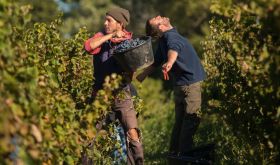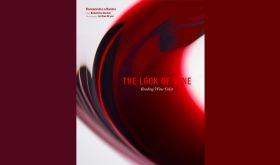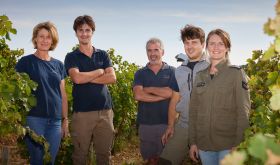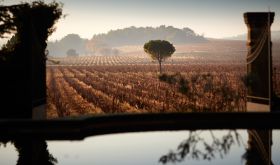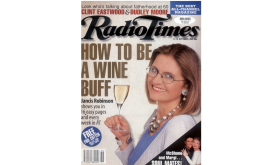Fancy your chances at identifying a late-harvest California Gewürztraminer or a Lagrein from Alto Adige? Last week, more than 150 Master of Wine students were faced with precisely that challenge, among many others, as part of the annual examination.
Inevitably there is a gruesome autopsy when the papers are released – both for students to assess their chances of passing, and for MWs to sympathise, and say a prayer of thanks for not having to sit the exam again. It's also a chance to assess its difficulty compared with previous papers – with the proviso that there is no such thing as an easy exam. Even so, some questions and wines can seem kinder than others.
This year, the five theory papers all seem in line with expectations. Diligent students would have researched all the topics that are covered by the questions. Nothing is wilfully obscure, although it is worth remembering that however simple a question may seem, extremely detailed answers are sought. Some of the questions are positively tempting, however. I especially like the one about investing $10 million in the wine industry. Also the question 'How relevant is blind tasting in assessing wine?' could allow for some creative responses, bearing in mind the other half of the MW exams, the tasting papers.
Here, the wines are largely drawn from what should be a familiar pool of classics. There are a few outliers, such as Roero Arneis, Etna Rosso, and Cullen's skin-fermented Amber white, but in the context of the questions, none of those are too fiendish.
Of course, it's easy to pass judgement in the abstract, and I know first-hand how much harder it can be when faced with 12 anonymous glasses (see my long-running Diary of an MW student). Even so, there can be little cause for complaint.
The full examination papers are reproduced below. And if none of this is enough to put you off, applications to join the MW course are open now!
THEORY PAPER 1 – THE PRODUCTION OF WINE – PART 1 (VITICULTURE)
(THREE questions to be answered, ONE from Section A and TWO from Section B)
Section A
- Temperature is one of the most impactful environmental variables on wine grape growing. How does temperature affect viticulture?
- Water availability is increasingly an issue in some wine producing regions. How can a viticulturist best ensure water sustainability when establishing and managing vineyards in drought-prone regions?
Section B
- Labour supply for vineyard work is decreasing in many parts of the world. If this trend continues, how will this affect viticulture, and how can vineyard managers around the world best prepare for, and handle, a shortage of workers?
- Discuss which vine varieties would be most suitable for the production of dessert wines. Explain your choice with specific reference to any climatic requirements.
- Does soil preparation affect the potential yield and quality in a vineyard?
- What are the principal pests and diseases facing vine growers today, and how can they best be managed?
THEORY PAPER 2 – THE PRODUCTION OF WINE – PART 2 (VINIFICATION AND PRE-BOTTLING PROCEDURES)
(THREE questions to be answered, ONE from Section A and TWO from Section B)
Section A
- “This wine has been bottled un-fined and unfiltered.” Assess the implications for the winemaker.
- Sauvignon Blanc appears in many styles throughout the world. Compare and contrast Sauvignon Blanc winemaking practices around the world.
Section B
- Discuss the roles of enzymes in winemaking.
- Compare and contrast winemaking techniques best employed for Syrah grown in Cornas, McLaren Vale and Hawke’s Bay.
- Temperature management is the key to modern winemaking. Discuss.
- How, and to what extent, can yeast influence the final style and quality of wines?
THEORY PAPER 3 – THE PRODUCTION OF WINE – PART 3 (HANDLING OF WINES)
(Answer TWO questions from the FOUR listed below)
- Outline the most important quality control checks during bottling and why each is necessary.
- What analyses should be carried out at the winery pre- and post-bottling to ensure that a wine is in good condition and conforms to legal requirements for sale?
- Many winemakers are reducing the levels of free and total sulphites in wine. Consider the role of sulphites at bottling and until the wine reaches the end consumer. What are the implications of reduced levels of free sulphites?
- Briefly discuss three of the following showing their importance to the handling of wine:
- Preservatives in wine
- Preventing deposits in bottled wine
- Inert storage
- Pre-bottling filtration
THEORY PAPER 4 – THE BUSINESS OF WINE
(THREE questions to be answered, ONE from Section A and TWO from Section B)
Section A
- How can the role of the intermediaries between producer and consumer be justified? How is it changing? Use examples from several different wine markets.
- Can small independent wine retailers compete with large chains on price? How else can they compete effectively?
Section B
- You inherit the equivalent of US$ 10 million and want to invest in the wine industry. How would you spend your money to attract the greatest return on investment? Explain your logic.
- In what ways have social media changed the marketing of wine brands over the past 10 years?
- You are Export Director of an established large wine company producing in excess of one million nine litre cases. How would you seek to capitalise on the potential of the growing Chinese market for imported wine? What are the risks and how can they be managed?
- As the owner of a Bordeaux Classified Growth from the Left Bank, what options are available to you today to present your wine to the market? Evaluate these options from commercial and brand-building standpoints.
THEORY PAPER 5 – CONTEMPORARY ISSUES
(TWO questions to be answered, ONE from Section A and ONE from Section B)
Section A
- What is the importance of alcohol in wine?
- Has science taken away the romance of wine?
Section B
- How relevant is blind tasting in assessing wine?
- What are the causes for optimism in the wine world today?
- Does great wine need a great story?
PRACTICAL PAPER 1
QUESTION 1
Wines 1-3 are all from the same country and region. For each wine:
- Identify the origin as closely as possible, with reference to the grape variety(ies) used. (3 x 11 marks)
- Discuss the winemaking techniques used to arrive at this style. (3 x 8 marks)
- Discuss the commercial potential. (3 x 6 marks)
QUESTION 2
Wines 4-5 are made from the same grape variety. With reference to both wines:
- Identify the grape variety (20 marks)Identify the grape variety and origin(s) as closely as possible. (16 marks)
- Identify the origin as closely as possible. (2 x 6 marks)
- Discuss the wine’s quality and maturity within the context of its origin. (2 x 6 marks)
- What are the key winemaking techniques used in the wine’s production? (2 x 5 marks)
For each wine:
QUESTION 3
Wines 6-7 are from Italy and are made from different grape varieties. For each wine:
- Identify the origin as closely as possible with reference to the grape variety used. (2 x 12
marks) - Discuss the wine’s style and quality; in which area of the trade would this wine be most
successful? (2 x 13 marks)
QUESTION 4
Wines 8-10 are all from Europe and each is made from a different grape variety. For each wine:
- Identify the grape variety. (3 x 8 marks)
- Identify the origin as closely as possible. (3 x 8 marks)
- Consider how the winemaker has sought to retain the wine’s sense of place. (3 x 9 marks)
QUESTION 5
Wines 11-12 are made from the same grape variety. For each wine:
- Identify the origin as closely as possible. (2 x 10 marks)
- Identify the vintage and consider the capacity to improve in the bottle. (2 x 8 marks)
- Discuss the method of production with particular reference to the use of oak. (2 x 7 marks)
PRACTICAL PAPER 1 – WINE LIST
- Muscadet Sèvre et Maine, Vincent & Sébastien Chéreau. 2015. Loire, France (12%)
- Savennières, Château d’Epiré. 2014. Loire, France (13.5%)
- Pouilly Fumé, Les Griottes, Jean-Pierre Bailly. 2015. Loire, France (12.5%)
- Pinot Gris, Charles Schleret. 2007. Alsace, France (14%)
- Pinot Gris, Neudorf. 2015. Nelson, New Zealand (14%)
- Soave Classico, Inama. 2016. Veneto, Italy (12%)
- Roero Arneis, Cornarea. 2016. Piemonte, Italy (13.5%)
- Muscat Réserve, Trimbach. 2014. Alsace, France (12.5%)
- Albariño, Pazo de Villarei. 2015. Rias Baixas, Spain (12.5%)
- Condrieu, Coteau de Vernon, Georges Vernay. 2014. Rhône, France (14%)
- Meursault, 1er Cru Les Charmes Dessus, Château de Meursault. 2013. Burgundy, France (13.5%)
- Chablis, Vielles Vignes de Sainte Claire, Jean Marc Brocard. 2014. Burgundy, France (12.5%)
PRACTICAL PAPER 2
QUESTION 1
Wines 1-4 are from different countries. They all share a common dominant grape variety. With reference to all four wines:
- Identify the common dominant grape variety. (16 marks)
- Identify the origin as closely as possible. (4 x 8 marks)
- Identify the key winemaking techniques used, with reference to other grape varieties and any oak maturation. (4 x 6 marks)
- Comment on quality and maturity. (4 x 7 marks)
For each wine:
QUESTION 2
Wines 5-8 are from the same country but from different regions. For each wine:
- Identify the origin and variety(ies) as closely as possible. (4 x 12 marks)
- Assess the quality within the context of the region of origin. (4 x 7 marks)
- Comment on the maturity. (4 x 6 marks)
QUESTION 3
Wines 9-12 are made from different grape varieties. For each wine:
- Identify the grape variety. (4 x 8 marks)
- Identify the origin as closely as possible. (4 x 8 marks)
- Comment on quality and commercial potential, within the context of the region of origin. (4 x 9 marks)
PRACTICAL PAPER 2 – WINE LIST
- Château Montrose. 1996. St Estèphe, Bordeaux, France (12.5%)
- Cabernet Sauvignon / Shiraz, Oxford Landing. 2014. South Australia, Australia (13.5%)
- Cabernet Sauvignon, Silver Oak. 2012. Alexander Valley, California, USA (14.2%)
- Rubicon, Meerlust. 2013. Stellenbosch, South Africa (14%)
- Montepulciano d’Abruzzo, La Piuma. 2015. Abruzzo, Italy (13%)
- Chianti Classico Riserva, ‘Rancia’, Felsina Berardenga. 2012. Tuscany, Italy (14.5%)
- Barolo, Pio Cesare. 2012. Piemonte, Italy (14%)
- Etna Rosso, Archineri, Pietradolce. 2014. Sicily, Italy (15%)
- Chinon, Domaine de la Semellerie. 2014. Loire, France (12.5%)
- Spätburgunder, Martin Wassmer. 2014. Baden, Germany (13.5%)
- Pinotage, Kaapzicht. 2013. Stellenbosch, South Africa (14.5%)
- Lagrein, Castel Turmhof, Tiefenbrunner. 2014. Südtirol / Alto Adige, Italy (13%)
PRACTICAL PAPER 3
QUESTION 1
Wines 1-3 are rosés from three different countries. For each wine:
- Identify the origin as closely as possible with reference to the style.
(3 x 7 marks) - Highlight the key winemaking techniques used. (3 x 8 marks)
- Discuss the commercial appeal and market positioning. (3 x 10 marks)
QUESTION 2
Consider wine 4 to be of unknown origin. For this wine:
- Highlight the key winemaking techniques used. (15 marks)
- Discuss its style, quality and possible market positioning. (10 marks)
QUESTION 3
Wines 5-6 are labelled as different single grape varieties. For each wine:
- Identify the grape variety. (2 x 8 marks)
- State the level of residual sugar (g/l) and level of alcohol (%). (2 x 4 marks)
- Discuss the quality and commercial potential. (2 x 13 marks)
QUESTION 4
Wines 7-8 are made predominately from the same grape variety. Considering both wines together:
- Name the dominant grape variety. (10 marks)
- Identify the origin(s) as closely as possible. (20 marks)
- Compare and contrast the styles with reference to the likely market positioning of each
wine. (20 marks)
QUESTION 5
Wines 9-10 are from the same country and region. For each wine:
- Identify the origin as closely as possible. (2 x 8 marks)
- Consider the likely vintage. (2 x 7 marks)
- Comment on the quality and potential to improve further in the bottle. (2 x 10 marks)
QUESTION 6
Wines 11-12 are both fortified. For each wine:
- Identify the origin as closely as possible. (2 x 9 marks)
- Comment on the method of production with reference to the wine’s quality. (2 x 10 marks)
- Who would buy this wine? (2 x 6 marks)
PRACTICAL PAPER 3 – WINE LIST
- White Zinfandel, Sutter Home. N.V. California, USA (9.5%)
- Billette Rosé, Pradel. 2015. Provence, France (13%)
- Pelorus Rosé, Cloudy Bay. N.V. Marlborough, New Zealand (12.5%)
- ‘Amber’, Cullen. 2014. Margaret River, WA, Australia (15%)
- Riesling, Giesen. 2015. New Zealand (10%)
- Gewürztraminer, Late Harvest, Husch Estate. 2014. Anderson Valley, California, USA (11%)
- Cuvée Juveniles, Torbreck. 2014. Barossa Valley, Australia (14.5%)
- Châteauneuf-du-Pape, Domaine du Vieux Lazaret. 2013. Rhône Valley, France (14%)
- Côte de Nuits Villages, Vieilles Vignes, Domaine David Clark. 2012. Burgundy, France (13%)
- Nuits St Georges, 1er Cru Clos des Argillières, Domaine Rion. 2011. Burgundy, France (13%)
- Palo Cortado, Viejo CP, Valdespino. N.V. Jerez, Spain (20%)
- Maury ‘Grande Reserve’, Domaine Pouderoux. N.V. Roussillon, France (15.5%)








